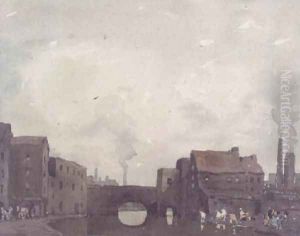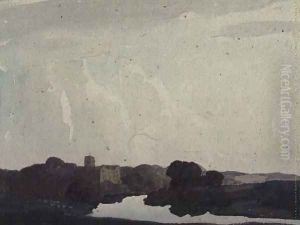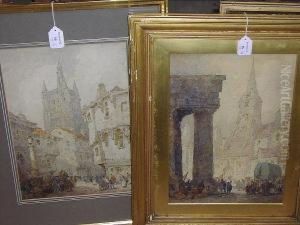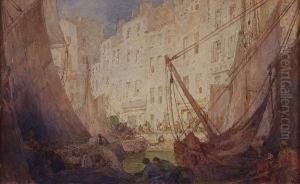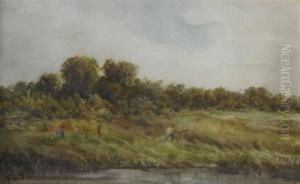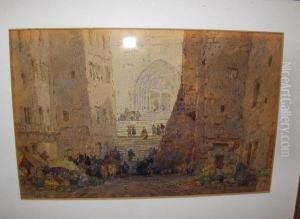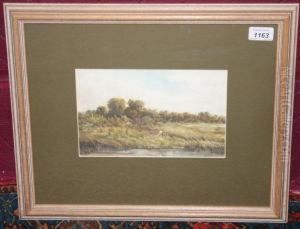Thurston Laidlaw Shoosmith Paintings
Thurston Laidlaw Shoosmith was an English artist known primarily for his watercolor paintings. Born in Northampton, England, in 1880, his artistic journey began in the early 20th century, a time when the art world in Britain was transitioning and experimenting with new styles and forms. Although not as widely recognized as some of his contemporaries, Shoosmith made a modest contribution to the art scene of his time.
Shoosmith studied at the Northampton School of Art before moving on to the Royal College of Art in London. After completing his education, he worked in both oil and watercolor, but it was with the latter that he found his true medium. His work often featured landscapes and urban scenes, influenced by the changing British countryside and the growth of cities during the industrial era. Despite the prevalence of industrial themes, his work also displayed a certain tranquility and often focused on the interplay of light and shadow.
Throughout his career, Shoosmith exhibited his work at various galleries and institutions. He was a member of the Royal Watercolour Society and participated in their exhibitions as well as those of other artistic bodies. While Shoosmith never achieved the fame of some of his peers, his work was appreciated for its technical skill and serene beauty. It reflected a dedication to capturing the essence of his subjects through careful observation and a mastery of watercolor techniques.
Shoosmith continued painting well into his later years, maintaining a passion for his craft until his death in 1963. His works are held in private collections and have been displayed in group exhibitions posthumously. Though not a major figure in the history of British art, Thurston Laidlaw Shoosmith's contributions provide a glimpse into the artistic landscape of his time and offer enduring scenes of early 20th-century England.
